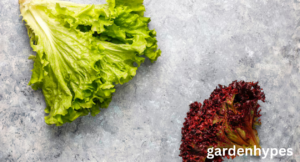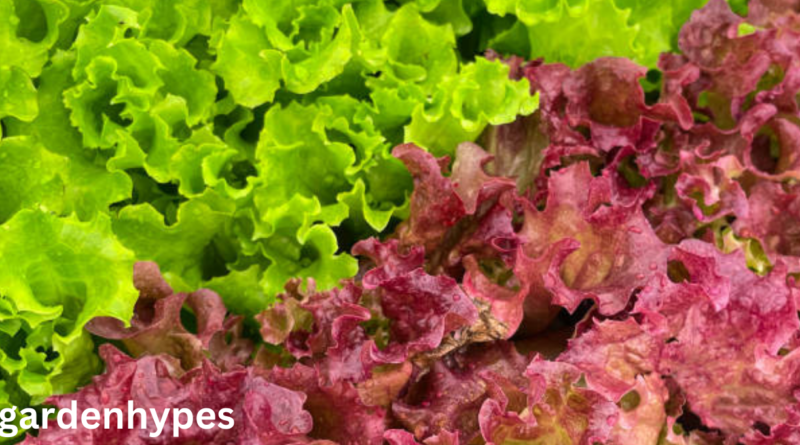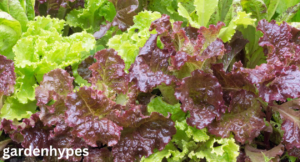Looseleaf Lettuce Easy Growing & Healthy Eating Guide
Introduction
When it comes to leafy greens, looseleaf lettuce stands out as a garden favorite. Unlike iceberg or romaine, it doesn’t form a tight head—instead, its leaves grow loosely in clusters, ready to be harvested leaf by leaf. This makes it an excellent option for home gardeners, small farms, and anyone who loves fresh salads. Not only is it easy to grow, but it’s also packed with nutrients and can be enjoyed in countless recipes.
click in link Veggie Sandwich
What is Looseleaf Lettuce?
Looseleaf lettuce is a non-heading type of lettuce. Instead of growing into a compact ball like iceberg, its leaves spread outward, forming loose rosettes. Because of this growth style, it’s easier to harvest continuously—just snip off the leaves you need, and the plant keeps growing.
This type of lettuce is popular worldwide for its mild flavor, crunchy texture, and adaptability to different growing conditions.
Why Choose Looseleaf Lettuce Over Other Types?
There are plenty of reasons gardeners prefer looseleaf lettuce:
- Quick growth: Most varieties are ready to harvest in just 30–45 days.
- Easy harvesting: You don’t have to wait for a full head to form; simply pick leaves as needed.
- Multiple harvests: With the cut-and-come-again method, you can harvest the same plant several times.
- Space-friendly: Perfect for containers, small garden beds, and even balcony gardens.
- Versatility in the kitchen: Works well in salads, wraps, smoothies, and sandwiches.
In short, looseleaf lettuce is a no-fuss, high-reward plant that’s great for beginners and seasoned growers alike.
Popular Varieties of Looseleaf Lettuce
Looseleaf lettuce comes in many shapes, colors, and flavors. Here are some popular varieties:
Green Looseleaf
Bright green, smooth or ruffled leaves. Mild flavor and tender texture, making it a staple in salads.
Red Looseleaf
Red-tinted or purple-tinged leaves add color and nutrients. Slightly more bitter than green varieties.
Oakleaf Lettuce
Named after its lobed leaves resembling oak tree foliage. Has a nutty taste and is visually attractive in salads.
Salad Bowl Lettuce
A long-standing favorite with deeply lobed, curly leaves. It’s crunchy, flavorful, and easy to grow.
These varieties not only add diversity to your garden but also make your meals look more appealing.
click in link Veggie Sandwich

Nutritional Benefits of Looseleaf Lettuce
Looseleaf lettuce isn’t just tasty—it’s also a nutritional powerhouse:
Vitamins and Minerals
It’s rich in vitamin A, essential for healthy eyes, skin, and immune function. It also contains vitamin C, which supports immunity, and vitamin K, which is vital for bone health and blood clotting.
Low-Calorie Superfood
Looseleaf lettuce is extremely low in calories (just about 5 calories per cup) yet nutrient-dense, making it a smart choice for weight management.
Hydration and Fiber
Since lettuce is about 95% water, it helps keep you hydrated. Plus, its fiber aids digestion and supports gut health.
In short, looseleaf lettuce proves that sometimes the simplest foods can be the healthiest.
Best Growing Conditions for Looseleaf Lettuce
To grow looseleaf lettuce successfully, you need to provide the right conditions:
- Climate: Thrives in cool weather, ideally between 60–70°F. Hot weather can cause it to bolt (go to seed early).
- Soil: Loose, fertile, and well-drained soil enriched with compost. pH between 6.0–7.0 is ideal.
- Sunlight: Prefers 4–6 hours of sun daily but tolerates partial shade—especially useful in warmer climates.
How to Plant Looseleaf Lettuce
Planting looseleaf lettuce is simple and beginner-friendly.
Direct Seeding
Sow seeds directly into the garden about ¼ inch deep. Keep rows 6–8 inches apart.
Container Gardening
Looseleaf lettuce thrives in pots, raised beds, and even window boxes. Make sure the container is at least 6 inches deep.
Spacing and Depth
Thin seedlings to about 4–6 inches apart to allow room for leaf growth.
Tip: Plant seeds every 2 weeks for a continuous supply throughout the season.
Watering and Fertilizing Tips
- Keep the soil consistently moist; lettuce has shallow roots and dries out quickly.
- Water early in the morning to avoid fungal problems.
- Use a balanced organic fertilizer or compost tea to boost growth without overpowering the delicate flavor.
How to Care for Looseleaf Lettuce
Caring for looseleaf lettuce doesn’t require much effort:
- Weeding: Remove weeds regularly to prevent competition.
- Mulching: Apply mulch to retain soil moisture and regulate temperature.
- Protection: Use row covers to shield plants from pests and extreme weather.
Common Pests and Diseases
Like most leafy greens, looseleaf lettuce can face a few challenges:
- Aphids: Small insects that cluster on leaves and suck sap. Rinse them off with water or use neem oil.
- Slugs and Snails: These pests chew holes in leaves. Use barriers like crushed eggshells or organic slug traps.
- Leaf Spot (fungal disease): Causes brown patches. Prevent it with good spacing and proper watering.
Harvesting Looseleaf Lettuce
One of the biggest advantages of looseleaf lettuce is its extended harvest window.
- Harvest when leaves are about 4–6 inches long.
- Use scissors to cut outer leaves while leaving the center intact (cut-and-come-again method).
- This allows the plant to keep producing for weeks.
How to Store Looseleaf Lettuce
Freshly harvested lettuce should be stored carefully to keep it crisp:
- Wash gently in cold water and pat dry.
- Store in the refrigerator wrapped in a damp paper towel inside a plastic bag or container.
- Consume within 5–7 days for the best flavor and texture.

Creative Ways to Use Looseleaf Lettuce
Looseleaf lettuce isn’t limited to salads. Here are some fun ways to use it:
- Fresh Garden Salads: Mix with other greens, veggies, nuts, or fruits.
- Lettuce Wraps: A low-carb substitute for tortillas or bread.
- Smoothies and Juices: Add to green smoothies for extra vitamins.
- Toppings: Perfect for sandwiches, burgers, and tacos.
- Garnish: Adds freshness and crunch to nearly any dish.
Looseleaf Lettuce vs. Head Lettuce
Looseleaf lettuce and head lettuce differ in growth, harvest, and use:
- Growth: Looseleaf grows fast and can be harvested multiple times. Head lettuce (like iceberg) takes longer and provides a single harvest.
- click in link Veggie Sandwich
- Flavor: Looseleaf has a fresher, more delicate taste. Head lettuce is crunchier but less flavorful.
- Space: Looseleaf requires less space and is easier for container gardens.
For home gardeners and fresh eaters, looseleaf is often the better choice.
Conclusion
Looseleaf lettuce is a gardener’s dream—fast-growing, low-maintenance, and endlessly versatile in the kitchen. Its soft, nutritious leaves can transform a simple salad, serve as a wrap, or even sneak into your morning smoothie. Whether you have a big backyard or just a balcony container, looseleaf lettuce is an excellent crop that rewards you with freshness all season long.
FAQs
- How long does looseleaf lettuce take to grow?
It’s typically ready for harvest in 30–45 days after planting. - Can I grow looseleaf lettuce indoors?
Yes, it does well in pots near a sunny window or under grow lights. - Will looseleaf lettuce regrow after cutting?
Absolutely! With the cut-and-come-again method, it can regrow several times. - What’s the difference between red and green looseleaf lettuce?
The main difference is in color and flavor—red varieties tend to be slightly more bitter and richer in antioxidants. - How do I keep lettuce leaves crisp after harvest?
Store them in the fridge wrapped in a damp paper towel inside an airtight container.

